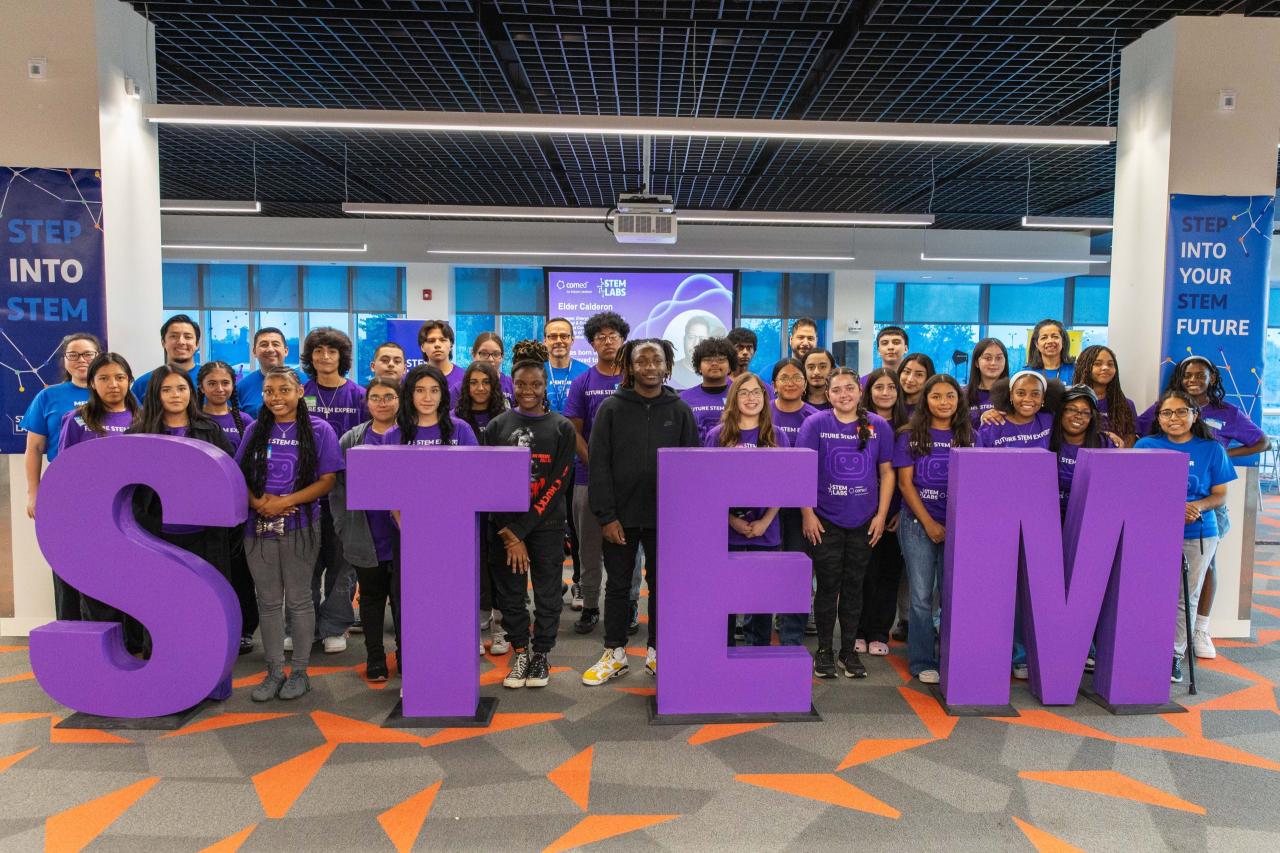
Powering Futures: STEM Education Now
In an increasingly technologically driven world, the critical importance of STEM education (Science, Technology, Engineering, and Mathematics) has never been clearer. It’s no longer just a collection of academic subjects; it’s the foundational bedrock for innovation, economic growth, and problem-solving in the 21st century. As industries transform at an unprecedented pace, fueled by artificial intelligence, automation, and global connectivity, the demand for a workforce proficient in STEM disciplines continues to skyrocket. For individuals and nations alike, investing in and excelling at STEM education isn’t merely an option; it’s a strategic imperative for securing future prosperity and relevance. This makes “STEM education” a highly sought-after topic, crucial for generating significant Google AdSense revenue through compelling, informative content. This comprehensive article will delve into why STEM education is more vital than ever, explore its multifaceted benefits, address current challenges, and outline actionable strategies for fostering a robust STEM pipeline for tomorrow’s most in-demand careers.
Why STEM Education Is Our Future
The world is undergoing a profound shift, moving rapidly from an industrial economy to a knowledge-based, innovation-driven economy. This transformation is underpinned by advancements in science and technology. STEM education directly prepares individuals to thrive in this new landscape, equipping them with the critical thinking, problem-solving, and analytical skills necessary to navigate complex challenges and seize emerging opportunities.
The imperative for robust STEM education stems from several key factors:
- Economic Growth and Competitiveness: Nations with strong STEM workforces tend to lead in global innovation, productivity, and economic competitiveness. STEM fields are directly linked to high-paying jobs and the creation of new industries.
- Addressing Global Challenges: From climate change and sustainable energy to global health crises and food security, the world’s most pressing problems require interdisciplinary solutions rooted in scientific understanding and technological ingenuity. STEM professionals are at the forefront of these efforts.
- Innovation and Discovery: STEM fields are the engines of innovation, driving new discoveries that improve quality of life, create new products, and reshape industries. Think of breakthroughs in medicine, sustainable technologies, or advanced computing.
- Future-Proofing the Workforce: Many jobs of the future, even those not explicitly “STEM” roles, will require a foundational understanding of data, technology, and analytical thinking. A STEM education provides transferable skills that are highly adaptable.
- Informed Citizenship: A basic understanding of STEM principles empowers citizens to make informed decisions about complex societal issues, evaluate scientific information critically, and participate effectively in a democratic society.
Without a strong foundation in STEM, individuals risk being left behind in the rapidly evolving job market, and nations risk losing their competitive edge on the global stage.
The Pillars of STEM: A Deeper Dive
Each component of STEM contributes uniquely to a holistic skill set, fostering a comprehensive approach to problem-solving and innovation.
A. Science: Understanding the World
Science is the systematic study of the natural and physical world through observation and experimentation. It teaches us how to ask questions, formulate hypotheses, collect data, and draw evidence-based conclusions.
- Critical Thinking: Encourages questioning, skepticism, and the ability to evaluate information rigorously.
- Observation Skills: Develops the ability to notice details and patterns in complex systems.
- Experimental Design: Teaches how to structure investigations to test ideas effectively.
- Scientific Literacy: Provides a framework for understanding complex phenomena from climate change to disease.
- Curiosity and Discovery: Fuels an innate desire to explore the unknown and push the boundaries of knowledge.
B. Technology: Applying Knowledge
Technology is the application of scientific knowledge for practical purposes, often involving the design and use of tools, machines, and processes. It bridges the gap between scientific theory and real-world solutions.
- Problem-Solving Through Tools: Teaches how to select and utilize appropriate technological tools to address specific challenges.
- Innovation and Design Thinking: Fosters creativity in developing new solutions and improving existing ones.
- Digital Literacy: Essential skills for navigating and contributing to the digital world, from coding to data analysis.
- Efficiency and Automation: Understanding how technology can optimize processes and increase productivity.
- Adaptability to New Tools: Encourages continuous learning and mastery of emerging technologies.
C. Engineering: Designing Solutions
Engineering is the application of scientific and mathematical principles to design, build, and maintain structures, machines, and processes. It’s fundamentally about designing practical solutions to human problems.
- Practical Problem-Solving: Focuses on real-world constraints and viable solutions.
- Design and Construction: Teaches the principles of building, testing, and refining prototypes.
- Systems Thinking: Encourages understanding how different components interact within a larger system.
- Resource Optimization: Learning to design efficient solutions using available materials and energy.
- Resilience and Failure Analysis: Understanding how to build robust systems and learn from design failures.
D. Mathematics: The Universal Language
Mathematics is the language of science and engineering, providing the tools for logical reasoning, quantitative analysis, and abstract problem-solving. It’s the foundation upon which much of modern STEM is built.
- Logical Reasoning: Develops the ability to construct sound arguments and identify flaws in reasoning.
- Quantitative Analysis: Essential for interpreting data, modeling phenomena, and making predictions.
- Pattern Recognition: Helps in identifying underlying structures and relationships.
- Abstract Problem-Solving: Cultivates the ability to solve problems that may not have immediate physical manifestations.
- Foundation for Other STEM Fields: Provides the necessary framework for advanced concepts in science, technology, and engineering.
Together, these four disciplines create a powerful synergy, preparing individuals not just for specific jobs, but for a mindset of continuous inquiry, innovation, and effective problem-solving.
Benefits of a Strong STEM Education
Beyond job prospects, a robust STEM education provides a wealth of advantages that enrich individuals’ lives and contribute to societal progress.
A. Enhanced Critical Thinking and Problem-Solving Skills
At its core, STEM education is about training the mind to approach challenges systematically.
- Analytical Reasoning: Students learn to break down complex problems into manageable components and analyze them methodically.
- Evidence-Based Decision Making: Emphasis on data, facts, and logical inference over assumption or intuition.
- Innovative Solutions: Encourages creative approaches to finding solutions, often outside conventional boundaries.
- Resilience in the Face of Failure: Learning that experimentation and iteration, including failure, are integral parts of the problem-solving process.
- Adaptability: Developing the mental agility to apply learned principles to entirely new and unforeseen problems.
B. High-Demand and Well-Paying Career Opportunities
The most tangible benefit for individuals pursuing STEM education is access to a wide array of promising career paths.
- Rapidly Growing Sectors: Fields like artificial intelligence, cybersecurity, renewable energy, biotechnology, data science, and advanced manufacturing are expanding exponentially.
- Competitive Salaries: STEM roles consistently command higher salaries compared to non-STEM occupations due to specialized skills and high demand.
- Job Security: The foundational and adaptable nature of STEM skills often provides greater job security, even amidst economic fluctuations.
- Global Mobility: STEM skills are universally valued, opening doors to international career opportunities.
- Diverse Career Paths: STEM isn’t just about being a scientist or engineer; it includes roles like technical writers, patent lawyers, science communicators, and healthcare professionals.
C. Fostering Innovation and Entrepreneurship
A strong STEM background often ignites an entrepreneurial spirit, leading to the creation of new businesses and technologies.
- Identifying Market Needs: STEM training helps individuals recognize gaps in technology or scientific understanding that can be filled by innovative products or services.
- Prototyping and Development: Practical skills in engineering and technology enable the translation of ideas into tangible prototypes and functional products.
- Risk Assessment and Problem-Solving: The analytical mindset cultivated in STEM helps in assessing risks and navigating the complexities of launching a new venture.
- Attracting Investment: Startups founded by individuals with strong STEM backgrounds are often more appealing to investors due to their technical depth and potential for innovation.
D. Promoting Digital Literacy and Technological Fluency
In an increasingly digitized world, understanding technology is no longer optional.
- Navigating Complex Systems: Ability to understand how digital systems work, from software applications to network infrastructure.
- Data Interpretation: Skills to analyze and derive insights from vast amounts of data, a crucial skill in almost every sector.
- Cybersecurity Awareness: Understanding potential digital threats and implementing protective measures.
- Effective Use of Tools: Maximizing productivity by proficiently using digital tools for communication, research, and creation.
- Contributing to the Digital Economy: Empowering individuals to be creators and innovators in the digital space, not just consumers.
E. Cultivating a Culture of Inquiry and Lifelong Learning
STEM education instills a mindset of continuous learning and intellectual curiosity.
- Asking “Why?”: Encourages a foundational curiosity about how things work and why phenomena occur.
- Embracing Experimentation: Promotes a willingness to test hypotheses and learn from outcomes, regardless of initial success.
- Problem-Solving Mindset: Fosters the confidence to tackle new problems and adapt to evolving challenges.
- Self-Correction: Teaches the importance of reviewing methods, identifying errors, and refining approaches based on new information.
- Continuous Skill Development: Recognizes that knowledge is dynamic and requires ongoing updating and refinement.
These benefits collectively empower individuals to lead fulfilling careers, contribute meaningfully to society, and adapt to the rapid changes characterizing the modern world.
Challenges in STEM Education

Despite its undeniable importance, STEM education faces significant hurdles that must be addressed to unlock its full potential.
A. Lack of Early Engagement and Awareness
Many students develop their perceptions of STEM at a young age, and often, early exposure is insufficient or uninspiring.
- Limited Hands-on Learning: Insufficient opportunities for engaging, practical, inquiry-based learning experiences in primary and secondary schools.
- Stereotypes and Misconceptions: Persistent stereotypes about who can succeed in STEM (e.g., “STEM is for boys,” “STEM is only for geniuses”) deter diverse groups.
- Lack of Role Models: Insufficient visibility of diverse STEM professionals, especially for girls and underrepresented minority groups.
- Perceived Difficulty: Mathematics and science are often viewed as inherently difficult or “boring,” leading to disengagement.
- Curriculum Gaps: Curricula that are too theoretical or fail to connect STEM concepts to real-world applications.
B. Underrepresentation of Women and Minorities
Despite efforts, significant disparities persist in STEM fields, hindering innovation and equity.
- Gender Gap: Women remain significantly underrepresented in fields like engineering, computer science, and certain physical sciences.
- Racial and Ethnic Disparities: Underrepresented minority groups face systemic barriers that limit their participation and advancement in STEM.
- Socioeconomic Factors: Students from low-income backgrounds often lack access to quality STEM resources and mentoring.
- Implicit Bias: Unconscious biases in teaching and hiring can deter diverse talent.
- Lack of Inclusive Environments: Workplaces and academic settings that do not foster a sense of belonging for diverse individuals can lead to attrition.
C. Teacher Training and Retention
The quality of STEM education is directly tied to the quality of its educators, who often face unique challenges.
- Insufficient Subject Matter Expertise: Many teachers, particularly at the primary level, may lack deep knowledge in certain STEM areas.
- Lack of Professional Development: Limited access to ongoing training that keeps them updated on new teaching methodologies and technological advancements.
- Low Retention Rates: High turnover among STEM teachers due to competitive private sector salaries or burnout.
- Limited Resources: Schools, especially in underserved areas, often lack the equipment, labs, and materials needed for effective STEM instruction.
- Isolation: STEM teachers may feel isolated without a strong professional learning community.
D. Curriculum Relevance and Adaptability
Educational systems often struggle to keep pace with the rapid advancements in STEM fields.
- Outdated Content: Curricula may not reflect the latest scientific discoveries or technological innovations.
- Disconnection from Industry: Lack of strong ties between academic institutions and industry needs, leading to a mismatch in skills.
- Focus on Rote Learning: Overemphasis on memorization rather than critical thinking, problem-solving, and hands-on application.
- Lack of Interdisciplinary Approach: STEM subjects are often taught in silos, failing to highlight their interconnectedness.
- Assessment Methods: Standardized tests may not effectively measure the practical, collaborative, and creative skills essential for STEM success.
E. Funding and Resource Disparities
Equitable access to quality STEM education is heavily influenced by funding availability.
- Underfunded Schools: Schools in economically disadvantaged areas often lack the resources for robust STEM programs, labs, and technology.
- Cost of Equipment: Specialized STEM equipment and software can be expensive, posing a barrier for many institutions.
- Lack of STEM-Specific Facilities: Many schools lack dedicated labs or makerspaces conducive to hands-on STEM learning.
- Disparity in STEM Opportunities: Uneven distribution of extracurricular STEM clubs, competitions, and mentorship programs.
Addressing these challenges requires a concerted effort from policymakers, educators, industry leaders, and communities to create a more equitable, engaging, and effective STEM learning ecosystem.
Strategies for Fostering a Robust STEM Pipeline
Building a thriving STEM workforce for tomorrow requires a multi-faceted approach, tackling challenges from early childhood through professional development.
A. Early Childhood and K-12 Engagement
Igniting interest in STEM from a young age is paramount.
- Hands-on and Inquiry-Based Learning: Implement curricula that prioritize active experimentation, project-based learning, and real-world problem-solving, rather than rote memorization.
- Integrated STEM: Break down silos between subjects by teaching STEM concepts in an integrated, interdisciplinary manner, showing their real-world connections.
- Role Models and Mentorship: Increase visibility of diverse STEM professionals, particularly women and minorities, through guest speakers, mentorship programs, and media representation.
- After-School Programs and Camps: Provide engaging extracurricular opportunities like robotics clubs, coding camps, and science fairs to deepen interest and skills.
- “Play-Based” STEM: Introduce fundamental STEM concepts through play and exploration in early childhood education.
B. Inclusive and Equitable Access
Actively working to dismantle barriers and ensure all students have equal opportunities in STEM.
- Addressing Bias: Provide training for educators to recognize and mitigate unconscious biases in the classroom.
- Targeted Outreach Programs: Create programs specifically designed to engage and support underrepresented groups in STEM, providing resources, scholarships, and mentoring.
- Culturally Responsive Pedagogy: Design STEM curricula that are relevant and connect to the lived experiences and cultural backgrounds of diverse student populations.
- Community Partnerships: Forge collaborations between schools, community centers, universities, and local industries to provide expanded learning opportunities and resources.
- Affordable and Accessible Resources: Advocate for policies and funding that ensure all schools have access to quality STEM equipment, technology, and qualified teachers, regardless of socioeconomic status.
C. Strengthening Teacher Training and Support
Investing in educators is key to improving STEM outcomes.
- Comprehensive Professional Development: Provide ongoing, high-quality professional development that focuses on current STEM content, inquiry-based teaching methods, and technology integration.
- Specialized STEM Certification: Encourage and incentivize teachers to pursue specialized certifications in STEM fields.
- Industry Partnerships for Teachers: Create opportunities for teachers to intern or collaborate with STEM companies to bring real-world relevance back to the classroom.
- Mentorship for New Teachers: Establish robust mentorship programs to support and retain new STEM educators.
- Competitive Salaries: Advocate for salaries that can compete with private sector opportunities to attract and retain top STEM talent in teaching.
D. Aligning Education with Industry Needs
Ensuring that STEM education remains relevant and prepares students for the actual demands of the workforce.
- Industry-Academia Collaboration: Foster strong partnerships where industry experts contribute to curriculum development, provide internships, and offer project-based learning opportunities.
- Focus on Soft Skills: Integrate the development of crucial soft skills like teamwork, communication, creativity, and adaptability, which are highly valued in STEM careers.
- Experiential Learning: Emphasize internships, co-op programs, apprenticeships, and hands-on capstone projects that simulate real-world work environments.
- Flexibility in Curriculum: Develop modular and adaptable curricula that can quickly incorporate emerging technologies and scientific breakthroughs.
- Credentialing and Micro-credentials: Offer flexible pathways to specialized skills through certifications and micro-credentials that directly address industry needs.
E. Policy and Funding Support
Government and private sector investment are critical for systemic change.
- Increased Public Funding: Allocate significant government funding for STEM education initiatives, research, and infrastructure from early childhood through higher education.
- Incentives for STEM Graduates: Implement scholarship programs, loan forgiveness initiatives, and grants to encourage students to pursue STEM degrees and careers.
- Private Sector Investment: Encourage corporate social responsibility programs and partnerships that directly support STEM education initiatives, including funding for schools, scholarships, and mentorship.
- National STEM Strategy: Develop a coherent, long-term national strategy for STEM education that aligns various stakeholders and resources.
- Research and Evaluation: Fund ongoing research into effective STEM pedagogy and regularly evaluate the impact of educational programs to ensure continuous improvement.
These comprehensive strategies, when implemented synergistically, can create a powerful ecosystem that nurtures talent, breaks down barriers, and ensures a vibrant STEM workforce capable of driving future innovation and prosperity.
The Broader Impact of STEM Literacy

Beyond direct career paths, a society with high STEM literacy is a more resilient, innovative, and informed society.
A. Informed Public Discourse and Decision-Making
Understanding scientific methods and data analysis enables citizens to critically evaluate information and participate meaningfully in democratic processes.
- Combating Misinformation: Equips individuals with the tools to discern credible scientific information from pseudoscience or false claims.
- Public Health Preparedness: A scientifically literate populace is better prepared to understand and respond to public health crises.
- Environmental Stewardship: Understanding ecological principles and climate science empowers collective action on environmental issues.
- Ethical Technology Use: Fosters critical discussions about the ethical implications of emerging technologies like AI or biotechnology.
B. Driving Economic Diversification and Resilience
A strong STEM sector allows economies to diversify beyond traditional industries and withstand global economic shocks.
- High-Value Exports: Innovation in STEM leads to products and services that can be exported, boosting national economies.
- Attracting Investment: Countries with a skilled STEM workforce are more attractive to foreign direct investment in research and development.
- Job Creation Beyond STEM: A thriving tech sector creates ripple effects, generating jobs in supporting industries, services, and infrastructure.
- Innovation Ecosystems: Fosters a dynamic environment where research institutions, startups, and established companies can collaborate effectively.
C. Fostering a Culture of Innovation
STEM literacy permeates society, encouraging a mindset of creativity, experimentation, and continuous improvement.
- Problem-Solving Mindset in Daily Life: Applying analytical thinking to everyday challenges, from personal finance to community issues.
- Creative Solutions: Encouraging novel approaches to existing problems, whether in business, art, or social initiatives.
- Embracing Change: A scientifically literate populace is often more open to technological advancements and societal evolution.
- Interdisciplinary Collaboration: Recognizing the value of combining knowledge from different fields to generate breakthroughs.
Securing Our Collective Future
The future of global prosperity, environmental sustainability, and human progress hinges significantly on the strength and inclusivity of STEM education. It is the ultimate key to unlocking potential, solving intractable problems, and creating the jobs that will define tomorrow’s economy. While significant challenges persist—from overcoming stereotypes and engaging diverse learners to ensuring robust teacher training and equitable access—the solutions are within reach. By fostering early engagement, promoting inclusivity, investing in our educators, aligning curricula with industry demands, and securing sustained policy and funding support, nations can build a vibrant pipeline of STEM talent. This comprehensive commitment to nurturing scientific literacy and technological proficiency will not only empower individuals with high-demand, well-paying careers but also cultivate a more innovative, resilient, and informed society ready to tackle the complexities of the 21st century. The time to invest in STEM education is not tomorrow, but today, to truly power the futures we envision.

